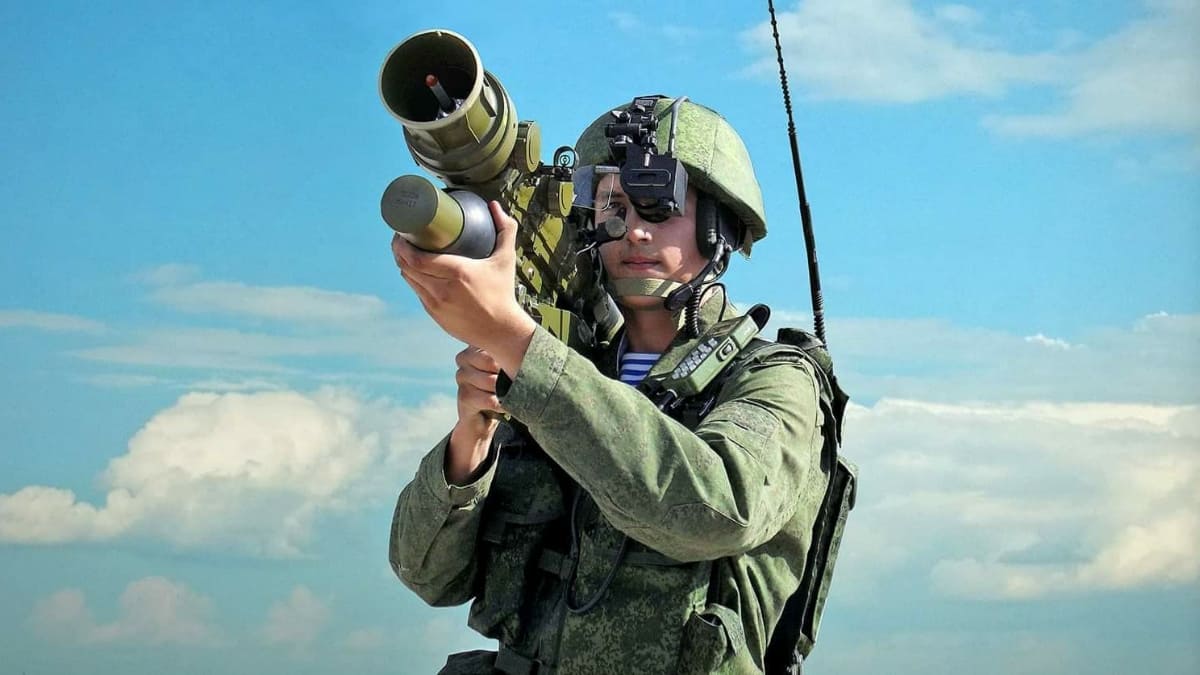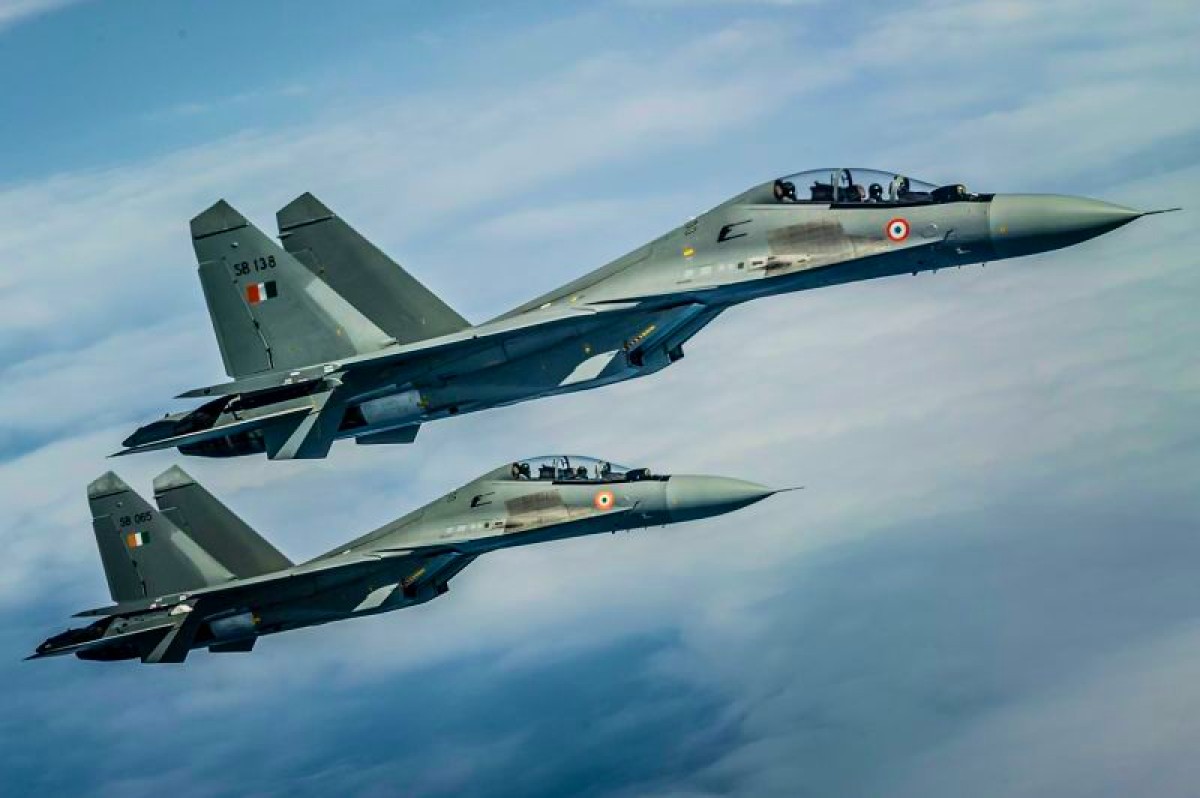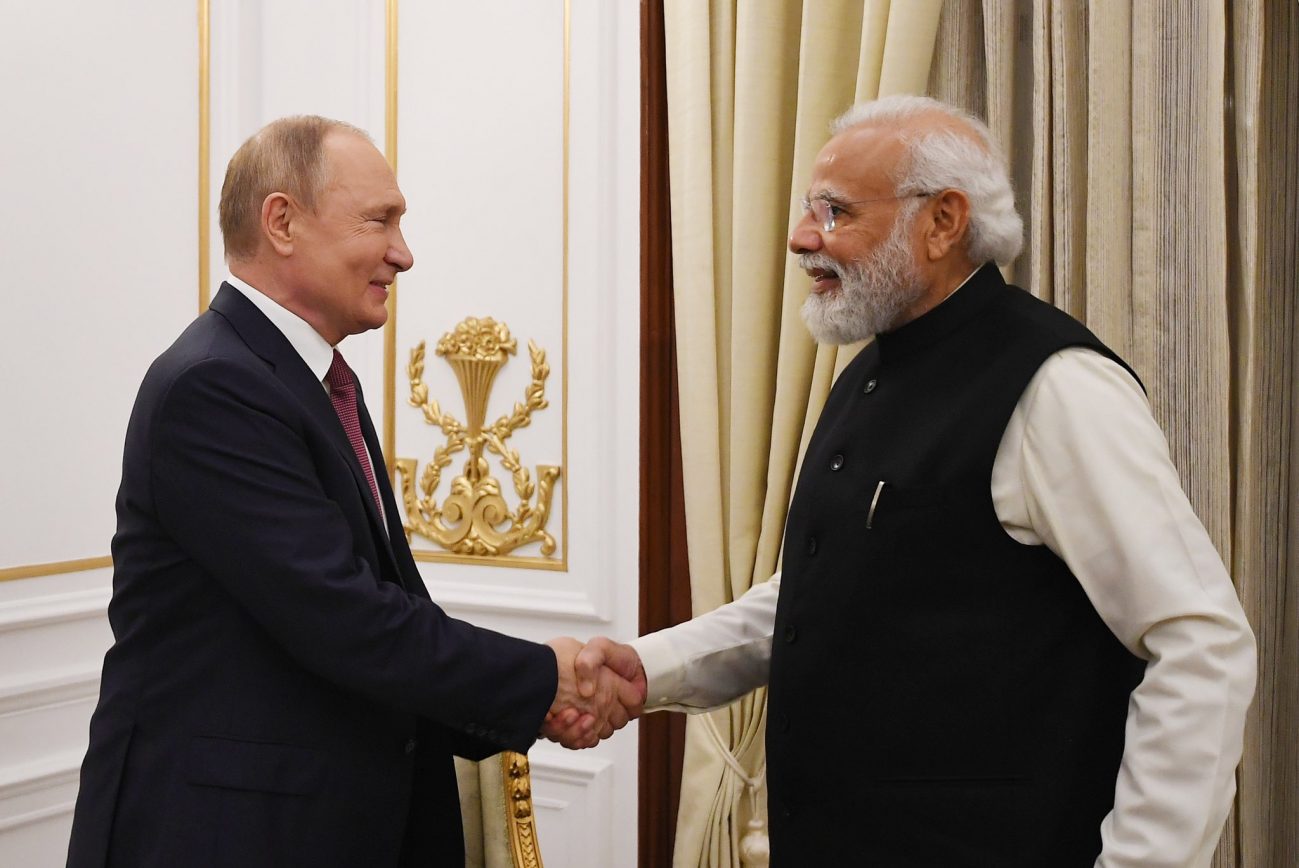The supply of the first batch of Igla-S Man Portable Air Defence Systems (MANPADS) to the Indian Army by Russia that is going to be deployed mostly in the areas bordering China seems to have caused a pause in the perceptions of those who argued that in the aftermath of Russia’s invasion of Ukraine, Moscow is bound to abandon Delhi for Beijing.
There are powerful narratives that China is more important than India for Russia and that Russia is of diminished importance for India’s strategic goals now that its ties with the United States are growing manifold.
But such perceptions are likely to warrant a review, with Russia giving enough indications that its growing proximity with China will not result in taking a decision that harms India’s interests. Till now, Moscow has not displayed any behavior that would suggest that it is tilting toward China in a dispute in which India and China are both involved.
What is more important, in its defense relationship with India, Russia has not introduced any preconditions, something generally seen in such relationships with the US and other Western countries, save France (like how to use, when to use, and against whom you cannot use weapons or technology associated with them). Despite its growing proximity to China, Russia has never said that its supplied arms cannot be used against China.
Take, for instance, the case of MANPADS, part of a larger deal for 120 launchers and 400 missiles. These systems enhance the Indian Army’s Very Short Range Air Defence (VSHORAD) capabilities, particularly in high mountainous terrain along the Line of Actual Control with China in the north and northeast. These are hand-held defense systems that can be operated by an individual or crew. They are designed to bring down low-flying aircraft and can also identify and neutralize air targets such as cruise missiles and drones.
India and Russia signed a contract for such launchers and missiles on November 14, 2023. The first batch, in that sense, came in just four months, which also happened to be when Russia was at war with Ukraine. As per the contract, an Indian company will make the rest of these systems in India through a Transfer of Technology (ToT) from Russia.

The Igla-S acquisition is said to address the Indian Army’s need to replace the outdated Igla-1M systems. The need was highlighted by the Indian Army in 2012 through a letter by the then Army chief, General V.K. Singh (now a minister in the Modi government), to the then Prime Minister Manmohan Singh, citing the obsolescence of existing air defense systems.
And in 2018, Russia’s Rosoboronexport-manufactured Igla-S won a competitive bid as the lowest bidder (L1) over France’s MBDA-manufactured Mistra.
It is also worth noting that India has even deployed its three S-400 air defense missile squadrons procured from Russia along the borders with China and Pakistan. While one unit is looking at both China and Pakistan, one each has been earmarked for the China and Pakistan fronts.
Two more squadrons remain to be delivered; the delay has been attributed to the Russia-Ukraine conflict. Reportedly, the squadrons manufactured for the delivery to India were used by the Russians for their defense against Ukraine.
It is true that defense cooperation, which has been a key pillar of India-Russia ties for decades, is undergoing changes. But Russia still provides India with around 60 percent of its defense needs. Of course, the relationship is changing from a buyer-seller type to a partnership in joint production and co-development of military hardware.
Presently, India is producing SU30 MKI fighter aircraft and T90 tanks under Russian licenses. Two Indo-Russian joint ventures are co-producing Brahmos cruise missiles and AK203 rifles. Russian companies are now more than willing to participate in India’s ambitious Make in India program, which aims to enhance the production of military hardware indigenously.

In fact, as India’s partner, Russia is always prepared to share its most sensitive and newest technological developments with India, which the United States and other Western nations have been reluctant to do.
The Brahmos missile system is a shining example of this type of collaboration. Russia leases its nuclear submarines to India. Russia has unhesitatingly cooperated with India in its march towards becoming a major space power.
Of course, India no longer considers Russia to be a great market, given the comparatively poor technology associated with its weapons. Even in military sales, the Russian attitude in going against the signed agreement on Admiral Gorshkov aircraft (India has rechristened it as Vikramaditya) carrier with regard to money and delivery schedule was not found exactly helpful.
Russia was also alleged to be noncooperative and nontransparent in developing the Fifth Generation Fighter Aircraft (FGFA), in which India had equally invested US $295 million for the preliminary designs.
However, despite all the hiccups, India and Russia signed an agreement in 2021 for an institutionalized structure headed by the defense ministers of both countries to oversee the issues around military and military-technical cooperation, including joint military exercises, co-development of advanced defense systems, and technology transfers, for the next 10 years (till 2031).
Even otherwise, India-Russia bilateral ties have grown stronger despite the war in Ukraine and the consequent move by Moscow to draw closer to Beijing. Two-way bilateral trade is supposed to have crossed USD 50 billion in 2023-24.
Russia has emerged as a top supplier of crude oil to India, particularly since the beginning of the Ukraine conflict. Russia is building six nuclear power plants in India, two of which have already been commissioned, and the other two are nearing completion.
Russia is cooperating with India on human spaceflight program, Gaganyaan. Both India and Russia have also launched major programs in Artificial Intelligence and Quantum Computing. Besides, India has invested heavily in Russia’s hydrocarbon sector in Siberia and even North Russia.
As Indian foreign minister S Jaishankar has been consistently pointing out in recent months, the history of Indo-Russian ties can never be belittled, and Moscow will continue to remain one of Delhi’s India’s most valued allies for many more years to come.
The fundamental reality is that though Russia may have lost its position as a superpower in Cold War equations, it is still a big power if one goes by any possible definition of the elements that constitute power. It is huge and possesses the largest landmass of the earth as a single country. It strategically abuts Central Asia, China, and Iran, an area of political, security, and economic interests to India.
Russia is endowed with enormous natural resources, technological capacities, and trade potential. It still is the most important military power in the world after the United States.
Most significantly, Russia, perhaps, gives India a higher priority in its foreign policy and strategic calculations than the United States or other power centers of the world, their acknowledgment of India’s rising importance notwithstanding.

As already pointed out, Russia never hesitates to transfer its most sophisticated technology to India. It is Russia that gives its nuclear submarines on lease to India. It is Russia that has unhesitatingly cooperated with India in its march toward becoming a major space power. It is Russia that has unhesitatingly established nuclear power stations in India, something that cannot be said of the United States even after the conclusion of the civilian nuclear deal. And it is Russia, which has provided the most vocal support for India becoming a permanent member of the United Nations Security Council.
It is to be noted here that in its “foreign policy doctrine” published in March last year, Russia made it pretty clear that it would “continue to build up a particularly privileged strategic partnership” with India. While talking of “the Eurasian continent,” the Russian doctrine talked of China as well as of India with equal emphasis. While it pointed out that “Russia aims at further strengthening the comprehensive partnership and the strategic cooperation with the People’s Republic of China,” it highlighted how “Russia will continue to build up a particularly privileged strategic partnership with the Republic of India with a view to enhance and expand cooperation in all areas on a mutually beneficial basis and place special emphasis on increasing the volume of bilateral trade, strengthening investment and technological ties, and ensuring their resistance to destructive actions of unfriendly states and their alliances.”
In fact, one argued in EurAsian Times once why India is always a much more adored partner for Russia than China. Besieged with a growing problem of demographic decline, many Russian analysts fear that Siberia and its far east will soon be overrun by migrant Chinese laborers. This fear is genuine, as anybody familiar with Chinese history will admit that Chinese territorial claims all over Asia often followed its emigrants.
Besides, the history of China-Russia relations is not very inspiring for a long-term relationship in the future. In fact, three times that China formed an alliance with Russia—during the Qing Dynasty (1894), the Republic of China (1945), and the People’s Republic of China (1950)—none lasted long. The last—the Sino-Soviet Treaty of Friendship, Alliance, and Mutual Assistance in February 1950—could not prevent Russia from fighting a war with China in 1969.
It is true that the war in Ukraine has brought Russia closer to China, thanks mainly to the Western sanctions. This proximity, thus, is because of compulsions, not convictions. That explains why Russian scholars talk of “vigilant amicability” in Moscow’s relationship with Beijing so that Russia never becomes a junior partner of China. Russia will need to balance China, and in this game of balancing, it finds India as a critical partner.
- Author and veteran journalist Prakash Nanda is Chairman of the Editorial Board – EurAsian Times and has commented on politics, foreign policy, and strategic affairs for nearly three decades. A former National Fellow of the Indian Council for Historical Research and recipient of the Seoul Peace Prize Scholarship, he is also a Distinguished Fellow at the Institute of Peace and Conflict Studies.
- CONTACT: prakash.nanda (at) hotmail.com
- Follow EurAsian Times on Google News




